vivo released the vivo X80 Pro a few months ago with the aim to help content creators as well as aspiring filmmakers and photographers on producing quality content and images in the comfort of their palm. The vivo X80 Pro packs the new Snapdragon Gen 1 chip, up to 12GB of RAM, a Quad camera setup with Zeiss Optics, and a sizable 6.78-inch AMOLED panel. We have been using the vivo X80 Pro for over a month now and here’s what we liked and didn’t like about this device.

Vivo X80 Pro
Table of Contents
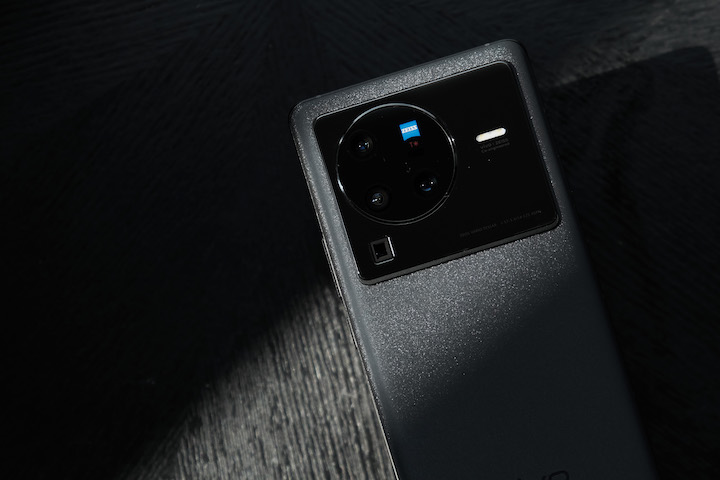
Vivo X80 Pro Back Panel
Let’s start with the basics, the design. Upfront we have a massive 6.78-inch curved LTPO3 AMOLED panel. A hole-punch cutout is situated in the middle for the front-facing camera and placed above it is the earpiece. Moving over to the back, we have a pretty muted vivo logo below and up top are a set of Zeiss optics quad camera setup coupled with a dual-tone flash. We dig the fact that the majority of the back panel is matte textured as it is somehow resistant to fingerprints. The frame of the vivo X80 Pro is made out of high-grade aluminum which does feel cool to the touch and definitely screams premium.
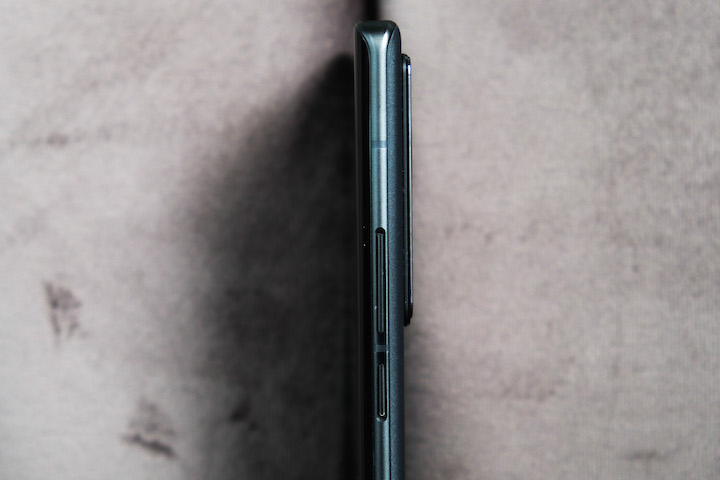
Vivo X80 Pro Right Side
Now for buttons and ports, situated on the right side are the volume and sleep/wake buttons.

Vivo X80 Pro Ports
USB C port for data transfers and charging, and main call microphone below.
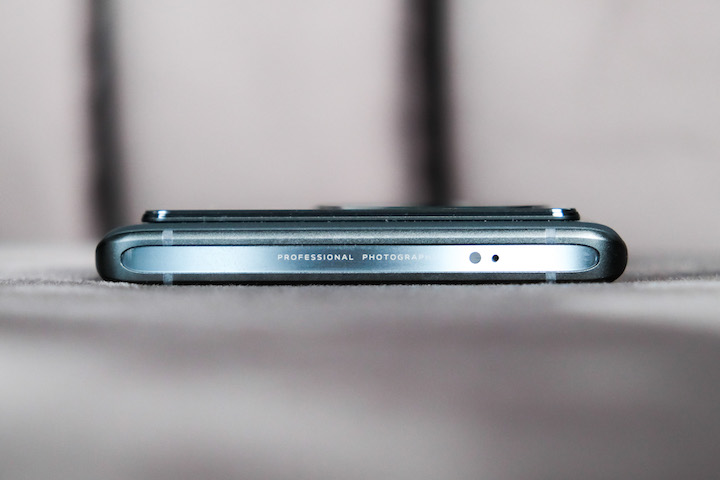
Vivo X80 Pro Top
While at the top we have an IR blaster as well as a secondary microphone, and a tagline that says “Professional Photography”.
The buttons are firm and clicky and they are placed on a decent spot, so for those people with small hands, fret not as you will feel very comfortable using this device. In addition, the overall styling of the vivo X80 Pro is very futuristic and posh and there’s not a single hint of it not being a professional and premium device as it is made out of high-grade materials. It also doesn’t feel light nor heavy at 215g.
As mentioned earlier we have a 6.78-inch curved LTPO3 AMOLED 120hz panel with a resolution of 3200 x 1400 capable of producing 517ppi — which is super sharp. The display produces vivid and realistic color tones and of course, deep blacks as it is an AMOLED display. It also does have LTPO3 which means, the display can juggle from 10Hz to 120Hz depending on your activity.
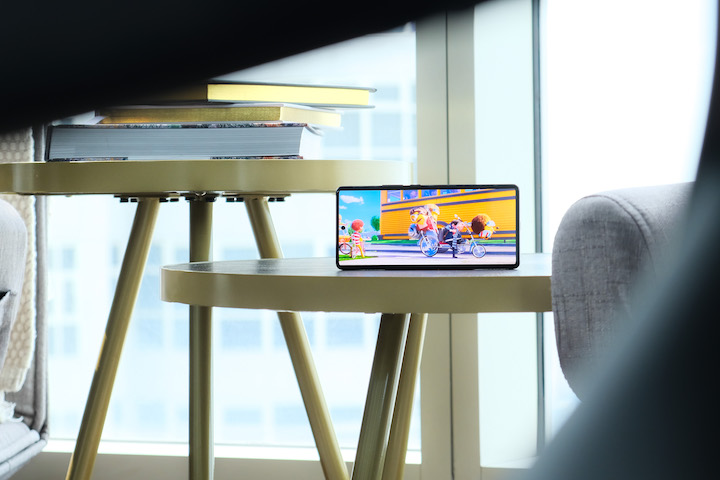
Vivo X80 Pro Display
We had our fun time using this device for watching multimedia content as we have a wider display size and smooth navigation throughout the system as it does have a 120Hz refresh rate. The refresh rate can be lowered down to 60Hz and you can also customize the resolution of the display with choices from either 3200 x 1440 or 2400 x 1080. Honestly, we kept it at the latter as it doesn’t have a huge difference visually and it does also contribute to the conservation of the battery of this device.
There is no glass protection mentioned but one thing is for sure; this display is not easily scratchable. We have been using this device without any screen protector – although it comes with a pre-installed film protector, but for the sake of this review, we removed it. Moving on, the display can produce up to 1500 nits of peak brightness which is bright enough to still be viewable even under sunlight.
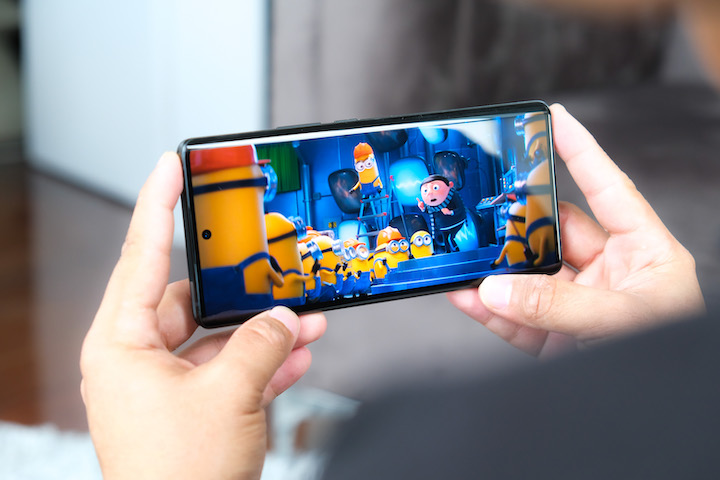
Vivo X80 Pro Multimedia
One of the features of the vivo X80 Pro lies underneath the display. Remember the era when in-display fingerprint scanners are starting to become a trend with small and thin rectangular sensors? Well, the vivo X80 Pro comes with a huge fingerprint scanner that can even accommodate two fingers simultaneously. Aside from its huge footprint, it is blazing fast as compared to most fingerprint scanners to date.
One of the things we noticed during our time with this device is that there are moments wherein the system is throttling down the brightness of the display to prevent it from overheating. A sensible quirk, although the downside is that it takes quite some time before it goes back to its maximum brightness. And mind you, this doesn’t just get throttled when in maximum brightness level, but also even when in half brightness too.
Overall, we love the color representation on the display of the vivo X80 Pro, aside from the fact that the display is crazy sharp, to the point that even small texts and elements are still visible and not pixelated, the colors doesn’t also look too saturated and overwhelming as compared to other AMOLED panels we see in other smartphones.
One thing is concerning to our part though, and that is the curved display. Don’t get us wrong, we loved it as it is very optimal for media consumption and it gives a nearly bezel-less illusion, but glass is glass, even though it is composed of strong glass materials, we still do find it fragile — same as other curved display smartphones in the market, as it can be a little susceptible to breaking when dropped. We accidentally dropped this device a couple of times already (sorry vivo pips) but luckily the display can hold the impact. One remedy to that is to use it with a case, but even so, the majority of the side display is exposed.
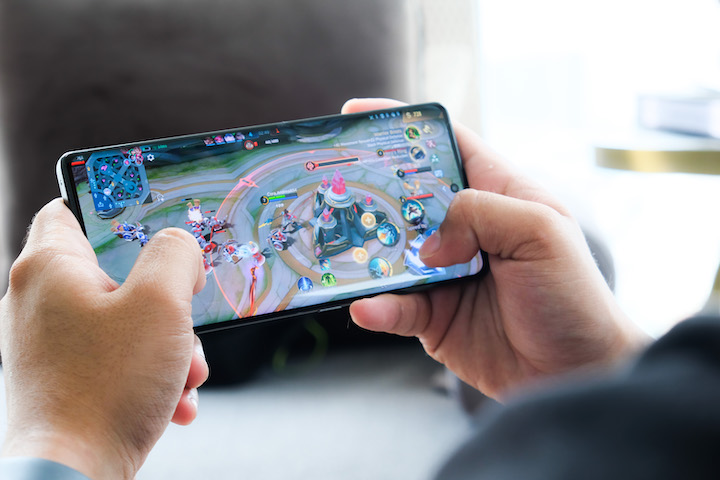
Vivo X80 Pro Gaming
The vivo X80 Pro comes equipped with a Qualcomm Snapdragon 8 Gen 1 chip coupled with an Adreno 730 GPU, up to 12GB RAM, and up to 512GB UFS 3.1 internal storage. Performance-wise, we didn’t encounter any issues with the X80 Pro as it does perform well in casual games even up to those graphically intensive game titles. Mind you, we always have the graphic settings set to the highest possible level to truly maximize this device’s performance. Albeit it can feel a little warm to the touch when playing for long periods of time, hence, it wasn’t to that alarming level.
If you are interested in benchmarks scores, here are the results that we got:
• AnTuTu v9 – 981,202
• AnTuTu v9 Storage – 1,588 MB/s (Seq. Read), 1,352 MB/s (Seq. Write)
• PC Mark – 11,442 (Work 3.0)
• 3D Mark – 9,621 (Wild Life), 4,327 (Wild Life Extreme)
• GeekBench 5 – 3,688 (Single-Core), 5,632 (Multi-Core), 4,212 (OpenCL)
Overall, the Snapdragon Gen 1 chip is substantially fast also thanks to the 12GB of RAM that we have in our unit we didn’t encounter any hiccups. If you find it a little limiting, you can allocate a sum of your X80’s storage to your RAM for additional horsepower. It doesn’t come with a microSD card slot but thankfully it’s got a huge storage option.

Vivo X80 Pro Cameras
In this tier, we have a very versatile set of quad cameras, namely, a 50MP f1.6 wide lens, 8MP f3.4 periscope 55mm telephoto, and 12MP f1.9 telephoto, and lastly we have 48MP f2.2 ultra-wide camera. For selfies, we have a 32MP shooter with f2.5. We did a video regarding its camera performance and its amazing set of features link here, But for the sake of this article, here are some of the sample shots that we got.
Generally speaking, we are really astonished by how the camera of the X80 Pro performs. I personally use the iPhone 13 Pro Max as my daily driver, but when I got the chance to play with this device’s cameras, I find myself taking much more photos than on my main device. Photos come out much more natural with an ample amount of post-processing. Sharpness on the other hand can be observed but not too much, making the overall image quality better than most flagship devices.
For videos, the X80 Pro can take up to a whopping 8K at 30fps. Videos come out smooth, especially when using the 12MP telephoto camera as it does have a gimbal OIS system. For the quality, just like in photos, videos come out very natural, crisp, and vibrant.
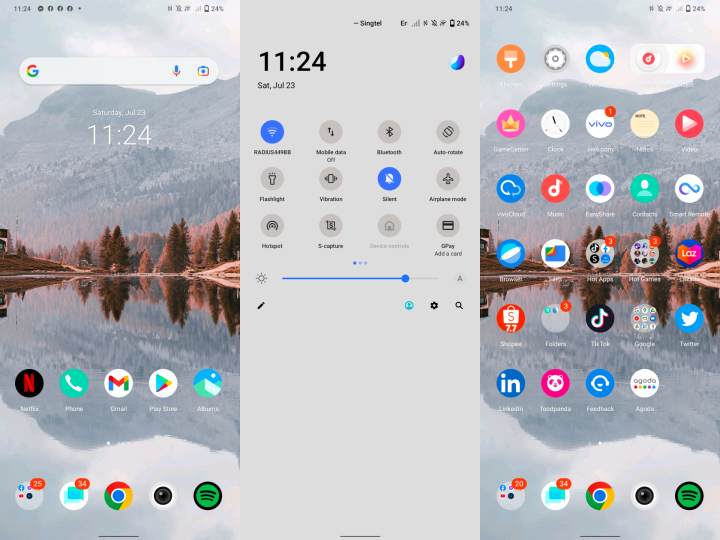
Vivo X80 Pro UI
Running on the vivo X80 Pro is their skinned Android 12 version, Funtouch 12. The UI feels clean, although, there are a few bloatwares, which is not surprising. Some of the pre-installed apps can be uninstalled to free up your X80 Pro’s storage. One good thing about this is that vivo promises long-term software support for the X80 Pro. This device will get up to three Android version updates from the current Android 12 version, which is nice.

Vivo X80 Pro Connectivity
For connectivity, the vivo X80 Pro comes with all the advanced connectivity features like 5G connectivity, Bluetooth 5.2, USB Type-C 3.1, WiFi 6, and GPS. For the battery, the vivo X80 Pro comes equipped with a decent 4,700mAh battery with support for 80W wired fast charging and 50W wireless fast charging support. In our testing, we got 0-100% wired charging in just 30 minutes– which totally bonkers, while 45 minutes when wireless charging. There’s also revised wired charging in the mix if you want to charge up your friend’s device or an accessory.
We run it on PCMark’s battery test and we yielded a score of 15 hours and 42 minutes while we have 19 hours and 21 minutes in our Standard Video Loop Test. Honestly, the battery life of this device is decent. During our time with it, the X80 Pro lasted 2 days of use which under WiFi all-day, casual gaming, browsing the web, and social media apps. But under nonstop data usage, heavy gaming, and lots of multitasking, this device lasted us 12% before dinner, which is still decent since it can be easily charged up.

Vivo X80 Pro Camera
The vivo X80 Pro is not just a smartphone, but a powerhouse as it does tick all the boxes when it comes to features and specs. But the question is, can it be a perfect flagship device? Well, Android users, or even an iOS fan, will surely fall in love with this device. There are a few drawbacks though, like the lacking of expandable storage, and its curved display – at least to some, but other than that, definitely this can be your ultimate flagship smartphone.
The Philippine price for the vivo X80 starts at a price of PHP 45,999USD 784INR 66,450EUR 747CNY 5,708 for the 12GB + 256GB variant, and the X80 Pro is at PHP 59,999USD 1,022INR 86,675EUR 974CNY 7,446 for the 12GB + 256GB. For a flagship device, the vivo X80 Pro is priced generously as compared to most flagship smartphones in the market. For instance, the cheapest iPhone 13 model you can buy is around PHP 45,000USD 767INR 65,007EUR 730CNY 5,585, and in it, you can only have 128GB of internal storage, a dual camera setup packaged in a very small form factor. The same story with the Samsung S22, you’ll only get 8GB of RAM, although we got a triple rear camera setup, we won’t be having any telephoto lens and a very limiting 128GB of internal storage, and with all of that, we can safely say that the vivo X80 Pro is one of the best budget-friendly feature-packed smartphone to date. How about you? What do you think about this device? Do let us know in the comments below!
vivo X80 Pro specs:
6.78-inch QHD+ (3200 x 1440) AMOLED display
120Hz refresh rate
MediaTek Dimensity 9000 SoC
ARM Mali-G710 GPU
Qualcomm Snapdragon 8 Gen1 SoC
Adreno 730 GPU
8GB, 12GB LPDDR5 RAM
128GB, 256GB, 512GB UFS 3.1
Quad-rear cameras:
• 50MP F1.57 GNV main
• 48MP F2.2 ultra-wide
• 12MP F1.85 portrait
• 8MP F3.4 periscopic telephoto (5x optical)
32MP F2.45 front camera
Dual-SIM
5G, 4G LTE
WiFi 6
Bluetooth 5.3 (Dimensity 9000)
Bluetooth 5.2 (Snapdragon 8 Gen1)
GPS, A-GPS, GLONASS, GALILEO, BDS, QZSS
NFC
USB-C
Fingerprint scanner (in-display, ultrasonic)
OriginOS (Android 12)
4,700mAh batter w/ 80W fast charging, 50W wireless fast charging
164.57 x 75.3 x 9.10 mm
219~215 g

YugaTech.com is the largest and longest-running technology site in the Philippines. Originally established in October 2002, the site was transformed into a full-fledged technology platform in 2005.
How to transfer, withdraw money from PayPal to GCash
Prices of Starlink satellite in the Philippines
Install Google GBox to Huawei smartphones
Pag-IBIG MP2 online application
How to check PhilHealth contributions online
How to find your SIM card serial number
Globe, PLDT, Converge, Sky: Unli fiber internet plans compared
10 biggest games in the Google Play Store
LTO periodic medical exam for 10-year licenses
Netflix codes to unlock hidden TV shows, movies
Apple, Asus, Cherry Mobile, Huawei, LG, Nokia, Oppo, Samsung, Sony, Vivo, Xiaomi, Lenovo, Infinix Mobile, Pocophone, Honor, iPhone, OnePlus, Tecno, Realme, HTC, Gionee, Kata, IQ00, Redmi, Razer, CloudFone, Motorola, Panasonic, TCL, Wiko
Best Android smartphones between PHP 20,000 - 25,000
Smartphones under PHP 10,000 in the Philippines
Smartphones under PHP 12K Philippines
Best smartphones for kids under PHP 7,000
Smartphones under PHP 15,000 in the Philippines
Best Android smartphones between PHP 15,000 - 20,000
Smartphones under PHP 20,000 in the Philippines
Most affordable 5G phones in the Philippines under PHP 20K
5G smartphones in the Philippines under PHP 16K
Smartphone pricelist Philippines 2024
Smartphone pricelist Philippines 2023
Smartphone pricelist Philippines 2022
Smartphone pricelist Philippines 2021
Smartphone pricelist Philippines 2020